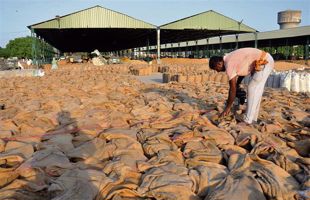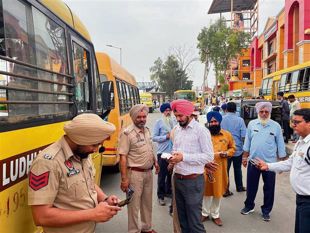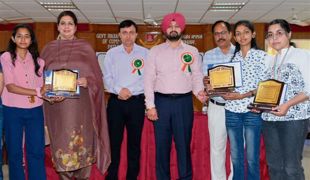
The death chair Photos by the writer
Preeti Verma Lal
Lucky Luciano smirks from the wall. The one with gimlet eyes and broad nose led a group of young Italian and Jewish mobsters against the older set of so-called ‘Moustache Petes’. Vito Genovese was ruthless, ambitious, power hungry and wanted to be named Boss of Bosses. Benjamin ‘Bugsy’ Siegel rose from the rough streets of New York City and later helped build modern Las Vegas. Amid mugshots of men-mobsters, there’s Virginia Hill, with sinuous curls and arched eyebrows, the so-called Queen of the Mob, a courtesan and entrusted cash courier for gangsters.
In Las Vegas’ Mob Museum (officially the National Museum of Organised Crime and Law Enforcement), the wall is pasted with faces — some grinning, others with greed writ between their knitted brows, a few dapper, a couple angelic in their looks but demonic in character. The names, faces and backgrounds vary. The dates span a century or more. The crimes range from bootlegging to betting, drug trafficking to murder. This is the Wall of the Mobsters. 100 Years of Made Men & Their Associates.
The tidy staircase leads one to the third floor of the 1933-built post office where the story of the mob begins with a large black and white photograph of mobsters hiding their faces with hats. Inside, history is narrated through photographs that trace the beginning of immigration and organised crime in the same breath. A guttural voice booms from the television screen where images of blood and death flit in and out of the frame.
In another room, pistols and prison weapons stand behind square glasses, the most looked-at being Al Capone’s .38 Smith & Wesson revolver. Newspaper clippings talk of the Great Depression, the fall of the Wall Street and the hint that the US President John F Kennedy was killed by the Mob.
Blood curdles in ‘Mob’s Greatest Hits’ (there is a warning of ‘graphic content’) that includes photographs of victims of the most famous murders credited to the mafia. Actual corpse-shots and the details of their killing are included in the plaques next to each murdered man and woman.
In the museum, the Mob takes more space than the dedicated G-men and FBI agents like J. Edgar Hoover, Eliot Ness and Harry Anslinger, who worked to quell crime across the country. One can listen to actual wire taps, train in a use of force training simulator and explore an interactive crime laboratory exhibit related to forensic science. Even sit in a replica electric chair, where the caught men gasped for their last breath.
The history of the Mob was twined with that of the Prohibition era (1919-1933) when the biggest ‘bootleggers’ — among them Al Capone, Lucky Luciano, Meyer Lansky and Frank Costello — made vast fortunes with unlawful production and sale of liquor. The museum’s basement (The Underground) is the perfect, Prohibition-era world where moonshine was produced from hidden stills, rum runners ran the show and illegal ‘speakeasy’ bars and jazz clubs opened where women for the first time drank in public with men.
Housed in the former Las Vegas Post Office and Courthouse, which is listed on the National Register of Historic Places, the museum was opened to public in 2012. Interestingly, the federal government sold the building to the city of Las Vegas for $1 and the idea of a Mob Museum was mooted by Mayor Oscar Goodman, who — ironically — was once a Mob defense attorney.
Al Capone, perhaps the most notorious bootlegger once famously said, “You can get much farther with a smile, a kind word and a gun than you can with a smile and a kind word”. In Las Vegas’ Mob Museum, Capone’s words ring true. Too many mob-men went too far with the gun. Not sure about the smile and the kind word, though.


























